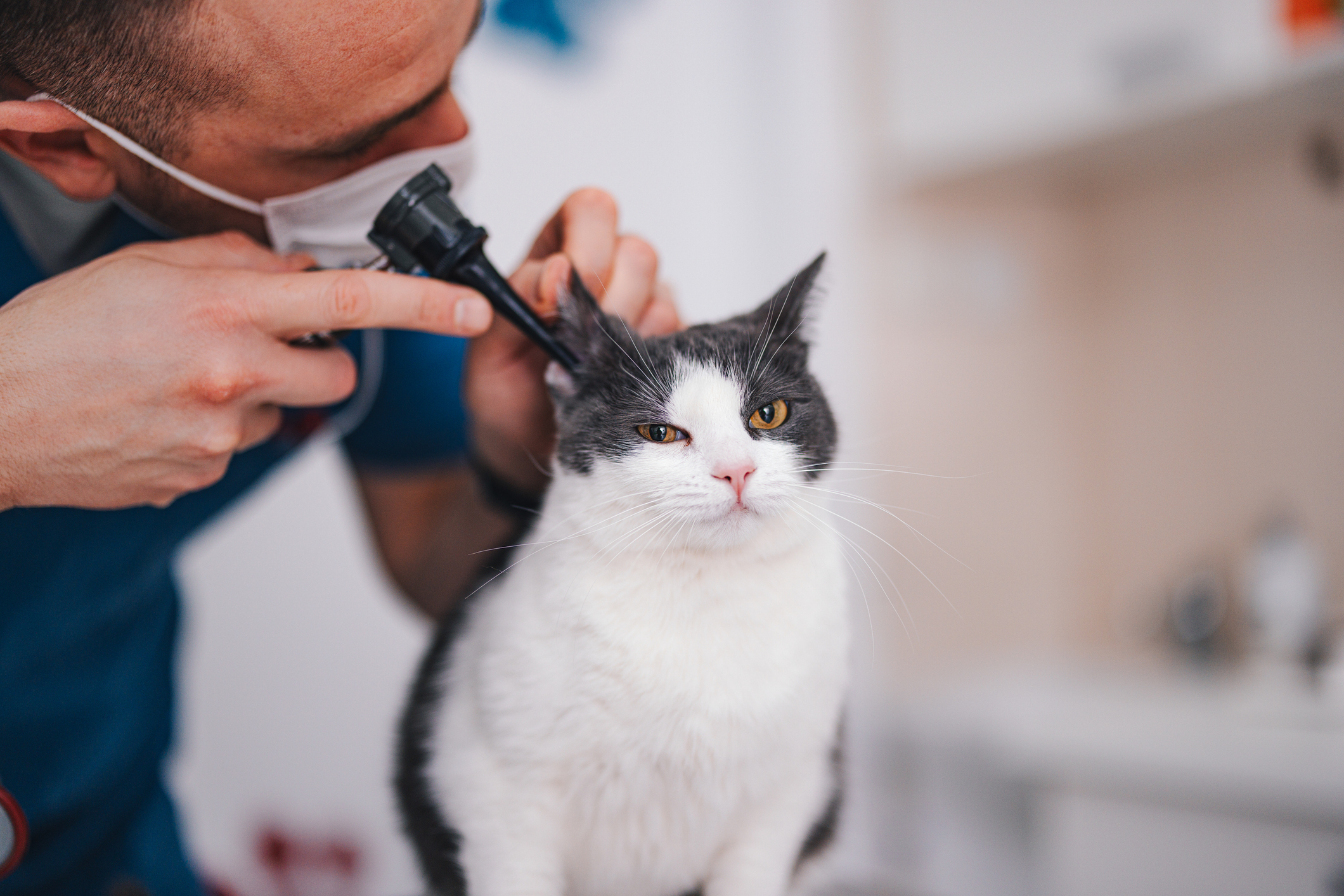Is Pet Insurance Worth It?
You can fend off big veterinary bills with a policy that covers your furry companion. But is it better to just stash those premiums in an emergency fund?

Rachael Green
For many people, pets are more than companions or protectors. They’re beloved family members. Americans spend an estimated $147 billion a year annually on their furry friends — costs that have more than doubled in the past decade.
Pet insurance policies provide a way for pet owners to manage those costs, and the number of insurance companies that provide medical and wellness coverage to pet owners has increased in recent years. They offer coverage akin to health insurance at a variety of rates, depending on the type of plan you purchase.
“Pets are like our family,” says Brian Jorgensen, chief executive officer of MetLife Pet Insurance. Pet owners “want to keep them healthy and happy, but regardless of age or breed, they can experience accidents or diseases. When some of the really expensive things happen, it can be a bit of a nightmare.”
From just $107.88 $24.99 for Kiplinger Personal Finance
Become a smarter, better informed investor. Subscribe from just $107.88 $24.99, plus get up to 4 Special Issues

Sign up for Kiplinger’s Free Newsletters
Profit and prosper with the best of expert advice on investing, taxes, retirement, personal finance and more - straight to your e-mail.
Profit and prosper with the best of expert advice - straight to your e-mail.
Some pet owners maintain enough in emergency savings to self-insure the cost of veterinary care. But if you’d rather avoid a hefty bill in the event that your pet has a major health issue, pet insurance may be worthwhile.
The Zebra is an insurance marketplace that checks over 100 insurers to give you multiple personalized quotes on pet insurance so you can easily compare rates side by side.
What does pet insurance cover?

Pet insurance mainly covers dogs and cats, although specialized plans cover reptiles, birds, small mammals and other exotic pets. There are three main types of coverage: accident-only, accident and illness, and wellness.
Accident and illness plans cover occurrences ranging from ingestion of a foreign object to cancer. Wellness coverage typically includes vaccines, annual checkups, dental care, nail trimmings, and flea, tick and heartworm medications.
Pet owners can buy accident, illness and wellness coverage individually or bundled. Most policies don’t cover preexisting conditions, although some will include them if the condition is curable.
When shopping for pet insurance, consider your pet’s age, potential illnesses common with its breed and any preexisting conditions, says Janet Ruiz, a spokeswoman for the Insurance Information Institute. If you’re unsure what diseases are common, check with your veterinarian before selecting a provider.
The cost of pet insurance

Pet insurance is typically billed monthly and can usually be canceled anytime. The average monthly pet insurance premium for accident and illness coverage is $56.30 for dogs and $31.94 for cats, according to the North American Pet Health Insurance Association, although some plans are available for as little as $16 a month for dogs and $10 a month for cats, Jorgensen says.
When determining the price of premiums, Jorgensen says insurers look at five factors: breed, age, deductible, co-insurance and plan limitations.
The more bells and whistles the plan has, the costlier it is to insure your cat or dog. As is the case with standard health insurance, you can lower the premiums by increasing your deductible.
You can purchase pet insurance from a specialty provider, through a handful of major insurance companies including Liberty Mutual, MetLife, and Nationwide, or through retailers such as Petco and PetSmart.
In most cases, you foot the bill up front and get reimbursed by the insurer. That enables you to go to your preferred vet rather than be limited to a network of providers. How quickly you receive a refund depends on the provider.
Ruiz recommends obtaining at least three quotes when shopping for pet insurance. Read the fine print, paying attention to what the plan doesn’t cover and any limitations on the type of care your pet will receive. You can compare quotes at Pawlicy Advisors and Pet Insurance Review.
Pet insurance vs a pet savings account
Many pet owners wonder whether the money spent on pet insurance premiums might be better spent on building up a pet savings account. Having a savings account just for pet costs is helpful.
It gives you a cushion to cover emergencies without messing up your budget. It’s your own money so you don’t have to worry about filing a claim, waiting for reimbursement or getting your claim denied. If you opt for a high yield savings account, it can even earn interest while you’re building it up.
With pet insurance premiums averaging as much as $56 per month, you’d have set aside over $670 in your first year if you put that cash into a savings account instead.
But a single emergency can easily wipe out that balance – and if it’s an emergency that requires ongoing care like arthritis or diabetes, you’d need to spend far more than $56 per month to keep up with the care your pet needs.
Ultimately, the best option is to do both. Get pet insurance and budget to put some money aside each month into a dedicated pet savings account.
Once you have a few thousand saved up in that account, you can reevaluate whether you want to keep your insurance. Though, it’s probably a good idea to keep it for the life of your pet.
Get more insurance tips and other personal finance insights straight to your inbox. Subscribe to our daily newsletter, A Step Ahead.
Note: This item first appeared in Kiplinger Personal Finance Magazine, a monthly, trustworthy source of advice and guidance. Subscribe to help you make more money and keep more of the money you make here.
Related content
Profit and prosper with the best of Kiplinger's advice on investing, taxes, retirement, personal finance and much more. Delivered daily. Enter your email in the box and click Sign Me Up.

Donna Fuscaldo is the retirement writer at Kiplinger.com. A writer and editor focused on retirement savings, planning, travel and lifestyle, Donna brings over two decades of experience working with publications including AARP, The Wall Street Journal, Forbes, Investopedia and HerMoney.
- Rachael GreenPersonal finance eCommerce writer
-
 How Much a $100k Jumbo CD Earns You
How Much a $100k Jumbo CD Earns YouYou might be surprised at how fast a jumbo CD helps you reach your goals.
-
 How Charitable Trusts Benefit You and Your Favorite Charities
How Charitable Trusts Benefit You and Your Favorite CharitiesThese dual-purpose tools let affluent families combine philanthropic goals with advanced tax planning to generate income, reduce estate taxes and preserve wealth.
-
 A 5-Step Plan for Parents of Children With Special Needs
A 5-Step Plan for Parents of Children With Special NeedsGuidance to help ensure your child's needs are supported now and in the future – while protecting your own financial well-being.
-
 Here's How Much You Can Earn with a $100,000 Jumbo CD
Here's How Much You Can Earn with a $100,000 Jumbo CDYou might be surprised at how fast a jumbo CD helps you reach your goals.
-
 A Financial Planner Takes a Deep Dive Into How Charitable Trusts Benefit You and Your Favorite Charities
A Financial Planner Takes a Deep Dive Into How Charitable Trusts Benefit You and Your Favorite CharitiesThese dual-purpose tools let affluent families combine philanthropic goals with advanced tax planning to generate income, reduce estate taxes and preserve wealth.
-
 How Financial Advisers Can Best Help Widowed and Divorced Women
How Financial Advisers Can Best Help Widowed and Divorced WomenApproaching conversations with empathy and compassion is key to helping them find clarity and confidence and take control of their financial futures.
-
 Your Guide to Buying Art Online
Your Guide to Buying Art OnlineFrom virtual galleries to social media platforms, the internet offers plenty of places to shop for paintings, sculptures and other artwork without breaking the bank.
-
 I'm 59 With $1.7 Million Saved and Just Lost My Job. Should I Retire at 59½, or Find New Work?
I'm 59 With $1.7 Million Saved and Just Lost My Job. Should I Retire at 59½, or Find New Work?We asked professional wealth planners for advice.
-
 Metro by T-Mobile Is Giving Away This Samsung Galaxy A16: Which Plans Are Eligible?
Metro by T-Mobile Is Giving Away This Samsung Galaxy A16: Which Plans Are Eligible?Metro by T-Mobile is offering free Samsung Galaxy A16 phones on eligible plans right now. Here’s how the deal works.
-
 I Drive and Collect Classic Cars: Here’s How I Got in the Game Without Spending a Fortune
I Drive and Collect Classic Cars: Here’s How I Got in the Game Without Spending a FortuneAre classic cars a hobby or an investment strategy — or both? Either way, the vintage car scene is much cooler and more affordable than you think.
-
 My First $1 Million: Retired Middle School Teacher, 68, North Carolina
My First $1 Million: Retired Middle School Teacher, 68, North CarolinaEver wonder how someone who's made a million dollars or more did it? Kiplinger's My First $1 Million series uncovers the answers.
